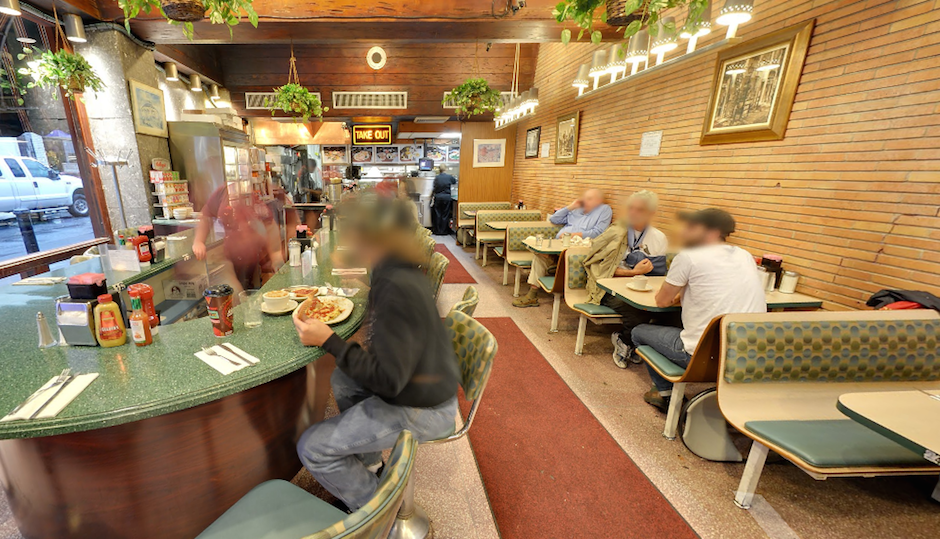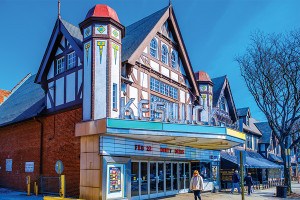Lament for Little Pete’s

Little Pete’s interior view via Google Street View
As we noted before, Little Pete’s may be torn down to make way for a luxury hotel. I say “may” because hotels have a way of not happening here. Take the W, if you will, which for years, has been promised but not realized. Or the supposed hotel boom that would result from the completion of the Convention Center. I believe the yield has been two hotels, while the only building that was spared from the wrecking ball for the Convention Center still stands empty. Center City has vacant lots waiting for a magic touch (looking at you, 19th and Walnut).
Some hotels are stalwarts, the Warwick among them. Now part of the Radisson family, it’s directly across the street from what could be a Hudson hotel designed by DAS should things by Mystery Developer go according to plan. Why narrow 17th Street needs another hotel is not clear to me, but what is clear is that getting rid of Little Pete’s changes the tenor and character of Center City in a way that’s inevitable, but also sad.
Little Pete’s is a last bastion of a certain kind of Philadelphia, one that used to be incorporated into Center City, but really isn’t anymore. Center City used to have a number of diners: Day’s Deli, Deluxe Diner, Little Pete’s on Chestnut, R&W, Applejack’s, various Midtowns…and it spoke to who we were: unpretentious, authentic, disinclined to put coffee on a pedestal or demand multiple menus to accommodate dietary restrictions. It was a rejection of foodie culture before there was foodie culture to reject. It was also part and parcel of an East Coast diner culture that’s part of the American immigrant history (see: Diner). But that culture has become commodified: the iconic New York Greek diner coffee cup is now mass produced and sold at places like Urban Outfitters.
From a practical perspective, Little Pete’s represents a reality of Center City that outsiders often don’t understand. People think of it as appealing to one type of person: white, upscale. Little Pete’s explained the complexity of the neighborhood by the simple fact of its demography. Multiethnic, multigenerational. And it’s one of the few affordable places to eat in the area. I know a lot of lower- and middle-income people, many of them getting up there in age, who relied on Little Pete’s on Chestnut and the current Little Pete’s for dinners. They saw their friends there, socialized, connected with people, ate a lot of food they could afford. They won’t be eating at a luxury hotel’s restaurant.
The cover of the New Yorker’s Food Issue, out this month, shows two tattooed young Portlandia-style hipsters at a restaurant. The male patron is swishing beer in his mouth to taste it. The waiter looks like a lumberjack, but in a cool way — the way that people who have never been lumberjacks look these days. It’s called “Hip Hops.” To me, it says, What the hell happened to postadolescent subversion? The subversives are all going to brewpubs. Grist notes that the word “kale” appears in 83 percent of the Food Issue content, including the fiction. Ten years ago, a similarly situated demographic would have been at Little Pete’s saying, “Fuck that.”
Times change. I get that. I won’t stand in the way of progress. But when 17th Street looks homogenous and boring and no one lives in Center City anymore because it’s just Center and no City, well, don’t come crying to me.
Au Contraire: Foobooz’s Art Etchells will shed no tears if Little Pete’s goes away.


